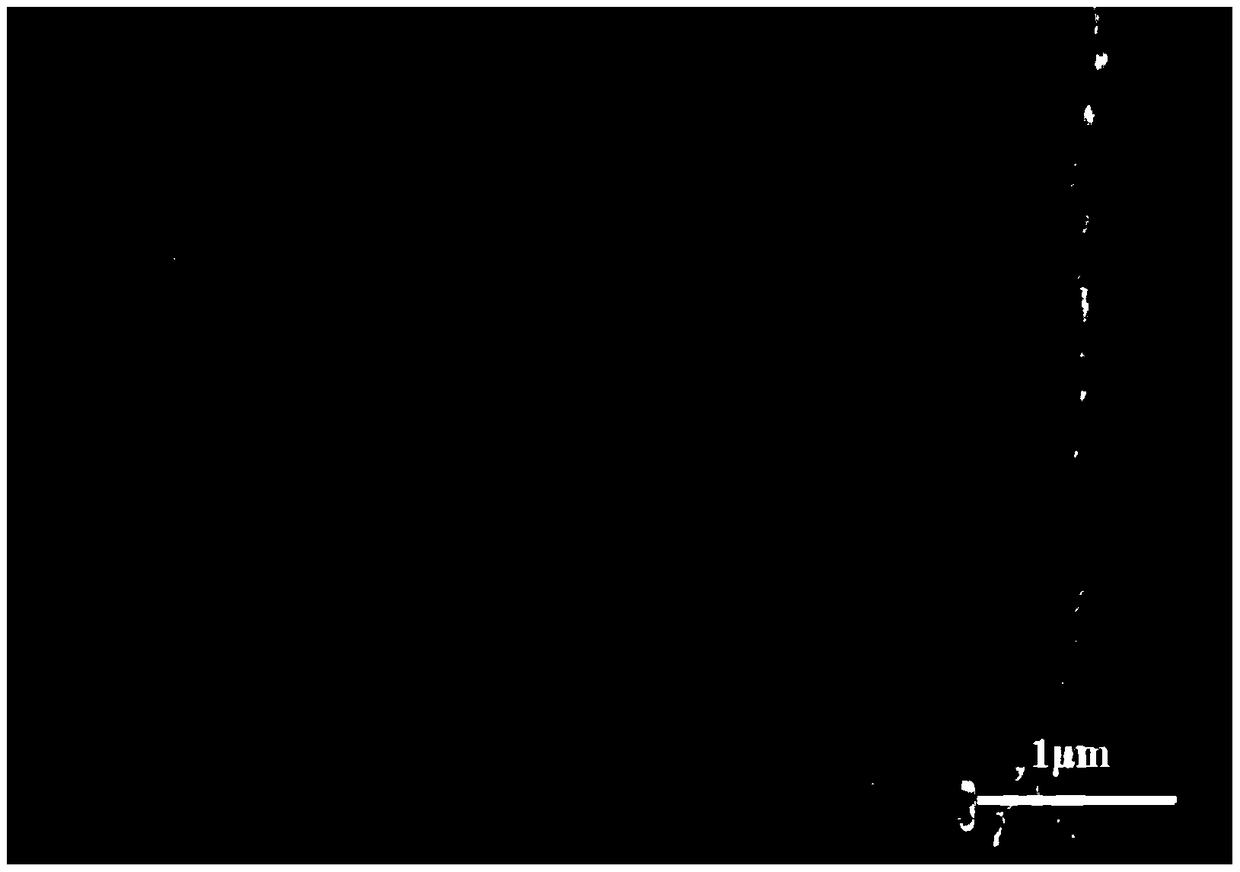Method for performing surface modification treatment to carbon fiber through electrochemical polymerization and carbon fiber composite material
A technology of surface treatment and composite materials, which is applied in fiber processing, textiles and papermaking, etc., can solve the problems of composite material mechanical properties decline, poor bonding between fibers and matrix, unfavorable fiber and matrix infiltration, etc., to achieve enhanced mechanical properties, improve cohesive effect
- Summary
- Abstract
- Description
- Claims
- Application Information
AI Technical Summary
Problems solved by technology
Method used
Image
Examples
Embodiment 1
[0043] Add 37.5ml of graphene oxide solution with a concentration of 4mg / ml into 400ml of electrolytic sulfuric acid solution with a concentration of 0.1mol / L. After stirring at a high speed, reduce the stirring speed to a low speed, and then add a single diacetone acrylamide until 500ml of mixed electrolyte solution was obtained, and left to stand for 12 hours; then, carbon fiber was used as the anode, graphite plate was used as the cathode, and the DC output was constant voltage, and the current density of the electrochemical polymerization process was controlled at 1.5mA / cm 2 , the electrochemical polymerization time is 2min. After the electrochemical polymerization treatment is completed, the carbon fibers are taken out, washed with deionized water, and then dried in an oven at 60° C. to obtain modified carbon fibers.
[0044] The scanning electron microscope image of the modified carbon fiber is as follows figure 2 shown, with figure 1 In contrast, there is a certain g...
Embodiment 2
[0050] Add 37.5ml of graphene oxide solution with a concentration of 4mg / ml into 400ml of sulfuric acid solution with a concentration of 0.1mol / L, after stirring at a high speed, reduce the stirring speed to a low speed, and then add monomer with a concentration of 0.1mol / L while stirring Acrylic acid until 500ml of mixed electrolyte solution is obtained, let it stand for 12h; then, use carbon fiber as anode, graphite plate as cathode, DC output in constant voltage mode, and control the current density of the electrochemical polymerization process to 1.5mA / cm 2 , the electrochemical polymerization time is 2min. After the electrochemical polymerization treatment, the carbon fibers were taken out, washed with deionized water, and dried in an oven at 60° C. to obtain modified carbon fibers.
[0051] The scanning electron microscope image of the modified carbon fiber is as follows image 3 shown, with figure 1 In contrast, there is a certain groove structure on the surface of th...
Embodiment 3
[0057] Add 37.5ml of graphene oxide solution with a concentration of 4mg / ml into 400ml of electrolytic sulfuric acid solution with a concentration of 0.1mol / L. After stirring at a high speed, reduce the stirring speed to a low speed, and then add a single phenol until 500ml of mixed electrolyte solution was obtained, and left to stand for 12 hours; then, with carbon fiber as the anode and graphite plate as the cathode, the DC output was constant voltage, and the current density of the electrochemical polymerization process was controlled at 1.5mA / cm 2 , the electrochemical polymerization time is 2min. After the electrochemical polymerization treatment is completed, the carbon fibers are taken out, washed with deionized water, and then dried in an oven at 60° C. to obtain modified carbon fibers.
[0058] The scanning electron microscope image of the modified carbon fiber is as follows Figure 4 shown, with figure 1 In contrast, there is a certain groove structure on the surfa...
PUM
| Property | Measurement | Unit |
|---|---|---|
| tensile strength | aaaaa | aaaaa |
| shear strength | aaaaa | aaaaa |
Abstract
Description
Claims
Application Information
 Login to View More
Login to View More - R&D
- Intellectual Property
- Life Sciences
- Materials
- Tech Scout
- Unparalleled Data Quality
- Higher Quality Content
- 60% Fewer Hallucinations
Browse by: Latest US Patents, China's latest patents, Technical Efficacy Thesaurus, Application Domain, Technology Topic, Popular Technical Reports.
© 2025 PatSnap. All rights reserved.Legal|Privacy policy|Modern Slavery Act Transparency Statement|Sitemap|About US| Contact US: help@patsnap.com



